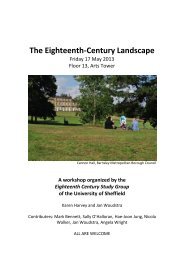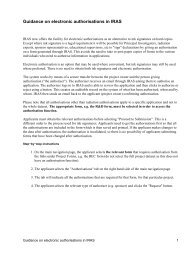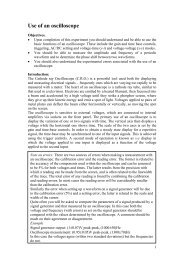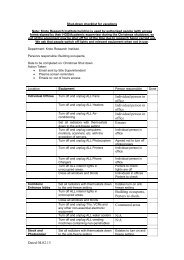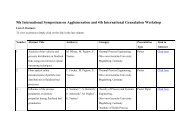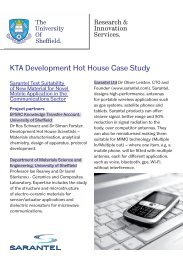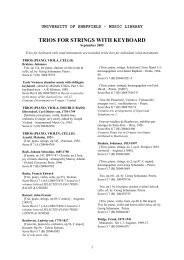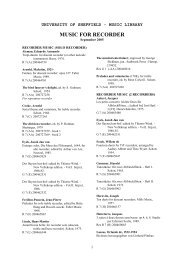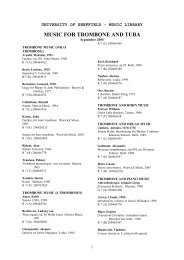Huron & SNAP Documentation
Huron & SNAP Documentation
Huron & SNAP Documentation
Create successful ePaper yourself
Turn your PDF publications into a flip-book with our unique Google optimized e-Paper software.
↓ To import a Locator script<br />
↓ To record messages from<br />
another application<br />
↓ To edit a scene file<br />
THE SIMULATION TOOLS<br />
1. Select Import from the File menu.<br />
2. Select a file to import from the file dialog.<br />
3. Select the time you wish to paste at. If the Ignore empty<br />
time option is selected then the first event in the script will<br />
be inserted at the given time. Otherwise the first event will<br />
be pasted with whatever offset it has within the script.<br />
The import mechanism will read the script and attempt to match<br />
Locator channels with existing tracks in the current scene. If a<br />
channel is found in the script that doesn’t match the channel of<br />
any existing track in the scene then a new track will be created<br />
with the desired channel.<br />
Within a Locator script, the events mapped to each channel are<br />
assumed to correspond to a single trajectory. So Locator scripts<br />
can’t contain multiple trajectories within a track.<br />
<strong>Huron</strong> tools such as Locator and Tracker create messages that<br />
can be recorded by pressing the record button in Sonic<br />
Animator. This section assumes that internal synchronisation is<br />
used. See the section on External MTC Synchronisation for<br />
external timing.<br />
When the record button is pressed, Sonic Animator listens for<br />
messages indicating that object locations are changing, and any<br />
messages whose Location Channel Numbers match the channel<br />
number of an existing, armed track will be inserted into a new<br />
trajectory in that track. A message destined for a track that isn’t<br />
armed or doesn’t exist in the scene will be ignored.<br />
The Scene file format uses ordinary ASCII characters and can<br />
be edited using any text editor. The file format uses the same<br />
hierarchical model as the rest of the application.<br />
The first three words of the file must be Sonic Animator Scene<br />
and the next two must be the version information.<br />
After this, the file is organised into keywords and corresponding<br />
data. Most keywords have one data element. See the file<br />
Sample.scene for an example of the allowable keywords and<br />
refer to the Command Reference section of this manual for a<br />
complete list.<br />
The LocationTrack keyword must be followed by a block<br />
section containing all the information for a track. When the file<br />
is parsed, the tracks will be inserted into the scene in the order<br />
they appear in the file.<br />
Similarly, track sections have a set of allowable keywords, one<br />
of which is LocationTrajectory. Note that the start time of a<br />
trajectory is specified relative to the start of the scene. Within<br />
the LocationTrajectory block are the trajectory information<br />
and a list of events. The data for the LocationEvent keyword<br />
consists of a time relative to the start of the trajectory and a<br />
three dimensional Cartesian position.<br />
The keywords within a section may appear in any order and any<br />
unrecognised keywords will be ignored. Comments are<br />
HURON TECHNICAL MANUAL PAGE 127



